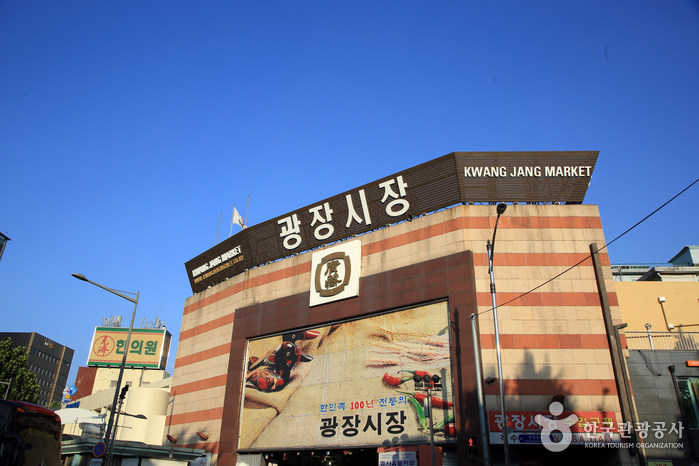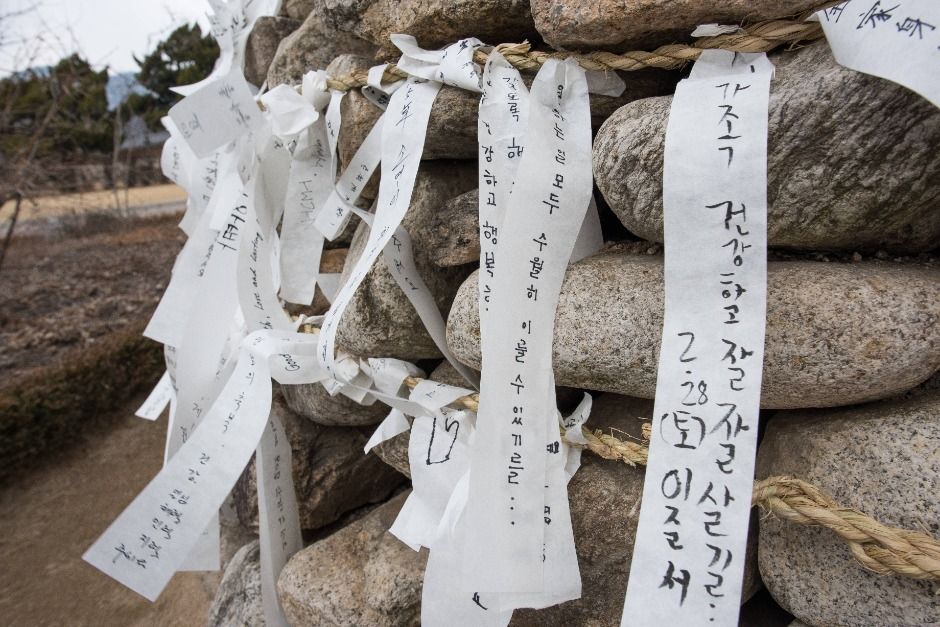Gwangjang Market (광장시장)
2.9Km 2024-07-08
88, Changgyeonggung-ro, Jongno-gu, Seoul
+82-2-2267-0291
Gwangjang Market was the first permanent market in Korea and continues to thrive as a popular tourist destination today. The name Gwangjang means "to gather from afar and keep altogether." The market began as a small trading center that brought in goods from nearby regions, but has now grown into a large wholesale market selling a variety of goods, including upholstery, imported goods, groceries, dried fish, traditional goods, and more. The most popular section of the market is the food street connected to the East Gate, North Gate 2, and South Gate 1. The food street caters to a wide range of patrons due to the plethora of menus available. It is also one of the most recommended tourist attraction for international travelers.
Cheongwadae Sarangchae (청와대사랑채)
2.9Km 2025-08-20
45 Hyoja-ro 13-gil, Jongno-gu, Seoul
+82-2-723-0300
Cheongwadae Sarangchae is an “open cultural space” for everyone. Throughout the facility, travel library-themed spaces and tourism-related exhibitions are set up providing distinctive experiences for visitors interested in learning more about Korea. By exploring Cheongwadae Sarangchae and its surroundings, visitors can expand their discovery and get a deeper insight as they travel Korea. Cheongwadae Sarangchae consists of exhbition halls on the first and second floors, with convenient amenities such as a nursing room, storage lockers, accessible restrooms, a gift shop, and a cafe.
ABC-Mart - Itaewon Branch [Tax Refund Shop] (ABC마트 ST이태원)
3.0Km 2024-04-22
159-1, Itaewon-ro, Yongsan-gu, Seoul
-
The Great Full Moon Festival (정월대보름 한마당)
3.0Km 2025-02-05
37 Samcheong-ro, Jongno-gu, Seoul
+82-2-3704-3106
The National Folk Museum is celebrating the first full moon of the Lunar new year, Jeongwol Daeboreum. A variety of experiences are prepared to eliminate bad luck and pray for prosperity and health. The event provides a chance for locals and tourists alike to learn more about the traditional culture of Korea.
ER Shoopen - IPARK Mall Branch [Tax Refund Shop] (ER 슈펜 아이파크몰)
3.0Km 2024-04-19
2F, 55, Hangang-daero 23-gil, Yongsan-gu, Seoul
-
Nike - IPARK Mall Branch [Tax Refund Shop] (나이키 용산아이파크)
3.0Km 2024-04-23
6F, 55, Hangang-daero 23-gil, Yongsan-gu, Seoul
-
Zara - IPARK Mall Branch [Tax Refund Shop] (자라 아이파크몰)
3.0Km 2024-04-23
55, Hangang-daero 23-gil, Yongsan-gu, Seoul
-
It Michaa [Tax Refund Shop] (잇미샤)
3.0Km 2024-04-19
4F I’Park Mall, 55, Hangang-daero 23-gil, Yongsan-gu, Seoul
-
Hyundai IPARK Mall [Tax Refund Shop] (현대 아이파크몰)
3.0Km 2024-04-18
55, Hangang-daero 23-gil, Yongsan-gu, Seoul
-
IPARK Mall Clinic [Tax Refund Shop] (아이파크몰의원)
3.0Km 2024-04-18
(Hangang-ro 3-ga) I'Park Mall Living Hall 6th floor, 55, Hangang-daero 23-gil, Yongsan-gu, Seoul
-

![ABC-Mart - Itaewon Branch [Tax Refund Shop] (ABC마트 ST이태원)](http://tong.visitkorea.or.kr/cms/resource/73/2878473_image2_1.jpg)

![ER Shoopen - IPARK Mall Branch [Tax Refund Shop] (ER 슈펜 아이파크몰)](http://tong.visitkorea.or.kr/cms/resource/76/2888676_image2_1.jpg)
![Nike - IPARK Mall Branch [Tax Refund Shop] (나이키 용산아이파크)](http://tong.visitkorea.or.kr/cms/resource/16/2889616_image2_1.jpg)
![Zara - IPARK Mall Branch [Tax Refund Shop] (자라 아이파크몰)](http://tong.visitkorea.or.kr/cms/resource/67/2889867_image2_1.jpg)
![It Michaa [Tax Refund Shop] (잇미샤)](http://tong.visitkorea.or.kr/cms/resource/25/2891025_image2_1.jpg)

![IPARK Mall Clinic [Tax Refund Shop] (아이파크몰의원)](http://tong.visitkorea.or.kr/cms/resource/21/2890621_image2_1.jpg)
 English
English
 한국어
한국어 日本語
日本語 中文(简体)
中文(简体) Deutsch
Deutsch Français
Français Español
Español Русский
Русский